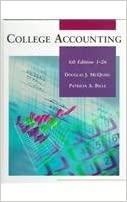
In this topic section, we're applying what we learned about futures in order to change the stock and bond mix, or asset allocation, of our investment portfolio. Specifically, do you remember your previous post, where you bought between 500 and 800k of a small cap stock or ETF? Let's see if you can take that position and apply what we've learned in this section about asset allocation. Step 1: Buy roughly $100,000 worth of bonds. Make it the bond of your choice-be it treasury bonds, a corporate bond of a company you're bullish on, whatever you like. Step 2 - Get Portfolio Weights: After Step 1, you'll now have a bond and equity portfolio between 500k-800k in equity, and about 100k in bonds. In the context of asset allocation, how much is this? Is it 80/20? 90/10? Show your calculations (if you need help, refer to the first few minutes of the Lecture Video). Step 3 - Set New Target Allocation: Reduce your equity asset allocation by a total difference of 25% to 50%. For instance, if your equity allocation from Step (2) was 75% equities, then the target equity allocation would be reduced to 25% or 50% equities (so, 0.75 -0.25 or 0.75-0.50). Accordingly, your bond allocation should be increased so that the new total for the portfolio is still 100%. In other words, if your new, target equity allocation is 50%, your target bond allocation is 50%. Step 4 - Buy or Sell "N" Futures to Adjust Allocation: Using what you've learned this week, buy or sell equity and bond futures contracts to synthetically get your existing portfolio in Step (2) to the new target portfolio in Step (3). Note: Data on Modified Duration for a bond can be difficult to find (usually we have financial models to calculate it, but that's beyond scope here). So, if using the formula to figure out the number of bond futures to trade (if you're using bond futures to trade, instead of equity futures), use your bond's Years to Maturity in place of its Modified Duration. Do the same thing for the bond future that you're using to hedge that bond exposure (example: if using a 10-year treasury future, assume modified duration is 10). Step 5 - Forum Post: Then in a post below, describe what you did in each of the above steps, posting your numerical calculations as well. Please also include a screen capture of your final portfolio position: your underlying bonds and equities, along with any futures overlay you implemented in Step (4). In this topic section, we're applying what we learned about futures in order to change the stock and bond mix, or asset allocation, of our investment portfolio. Specifically, do you remember your previous post, where you bought between 500 and 800k of a small cap stock or ETF? Let's see if you can take that position and apply what we've learned in this section about asset allocation. Step 1: Buy roughly $100,000 worth of bonds. Make it the bond of your choice-be it treasury bonds, a corporate bond of a company you're bullish on, whatever you like. Step 2 - Get Portfolio Weights: After Step 1, you'll now have a bond and equity portfolio between 500k-800k in equity, and about 100k in bonds. In the context of asset allocation, how much is this? Is it 80/20? 90/10? Show your calculations (if you need help, refer to the first few minutes of the Lecture Video). Step 3 - Set New Target Allocation: Reduce your equity asset allocation by a total difference of 25% to 50%. For instance, if your equity allocation from Step (2) was 75% equities, then the target equity allocation would be reduced to 25% or 50% equities (so, 0.75 -0.25 or 0.75-0.50). Accordingly, your bond allocation should be increased so that the new total for the portfolio is still 100%. In other words, if your new, target equity allocation is 50%, your target bond allocation is 50%. Step 4 - Buy or Sell "N" Futures to Adjust Allocation: Using what you've learned this week, buy or sell equity and bond futures contracts to synthetically get your existing portfolio in Step (2) to the new target portfolio in Step (3). Note: Data on Modified Duration for a bond can be difficult to find (usually we have financial models to calculate it, but that's beyond scope here). So, if using the formula to figure out the number of bond futures to trade (if you're using bond futures to trade, instead of equity futures), use your bond's Years to Maturity in place of its Modified Duration. Do the same thing for the bond future that you're using to hedge that bond exposure (example: if using a 10-year treasury future, assume modified duration is 10). Step 5 - Forum Post: Then in a post below, describe what you did in each of the above steps, posting your numerical calculations as well. Please also include a screen capture of your final portfolio position: your underlying bonds and equities, along with any futures overlay you implemented in Step (4)







